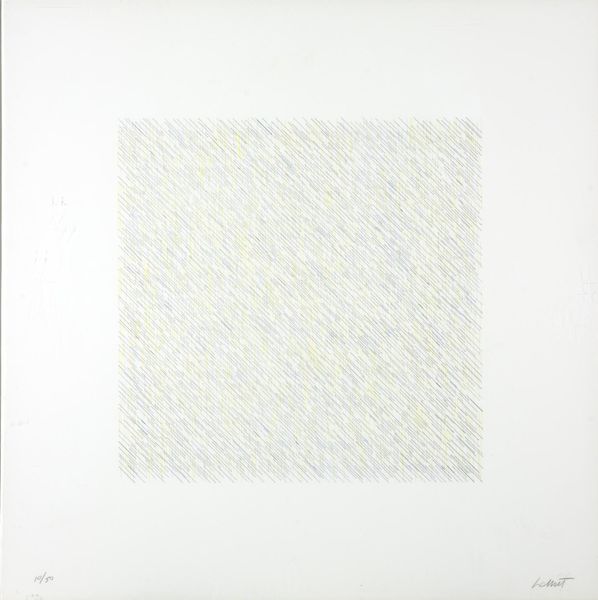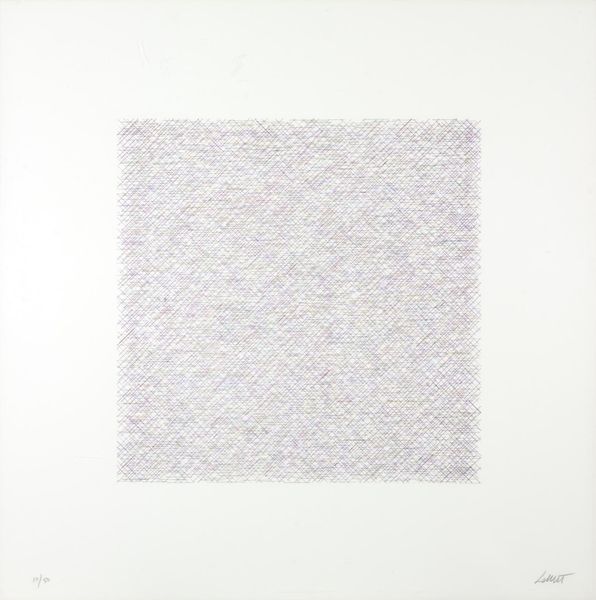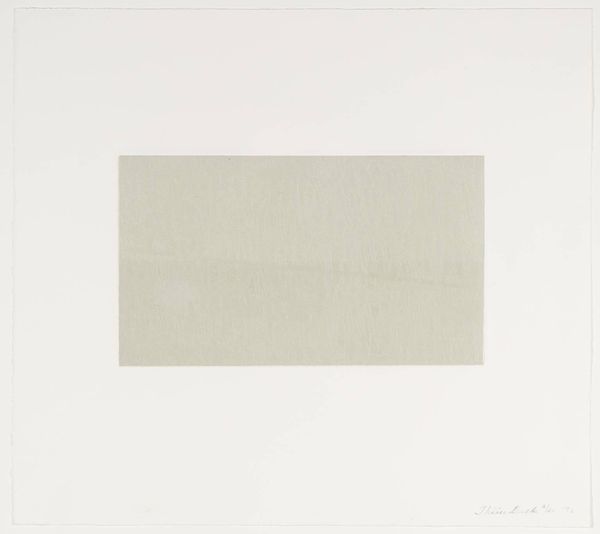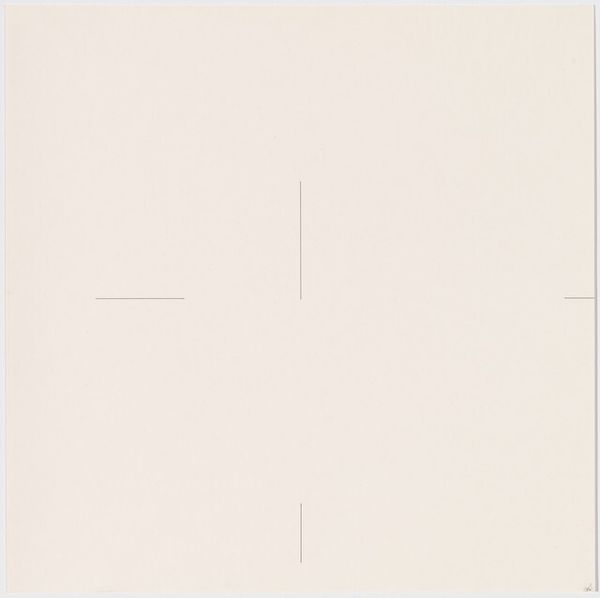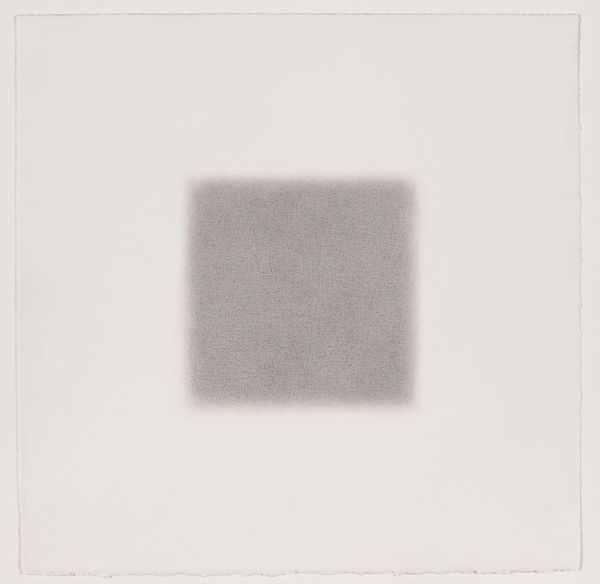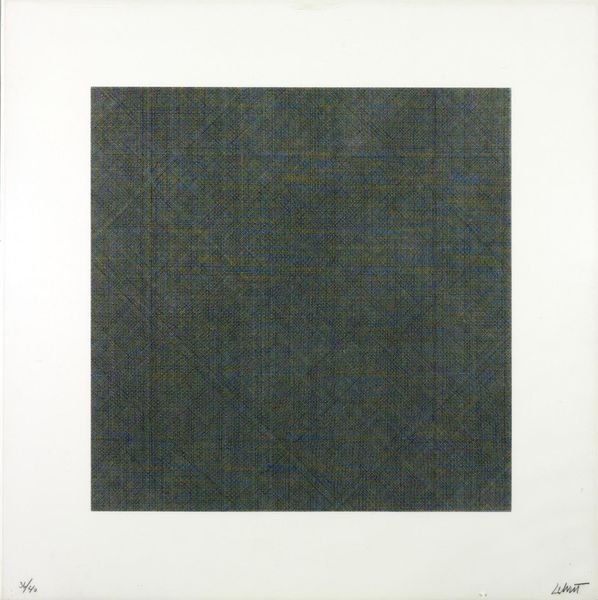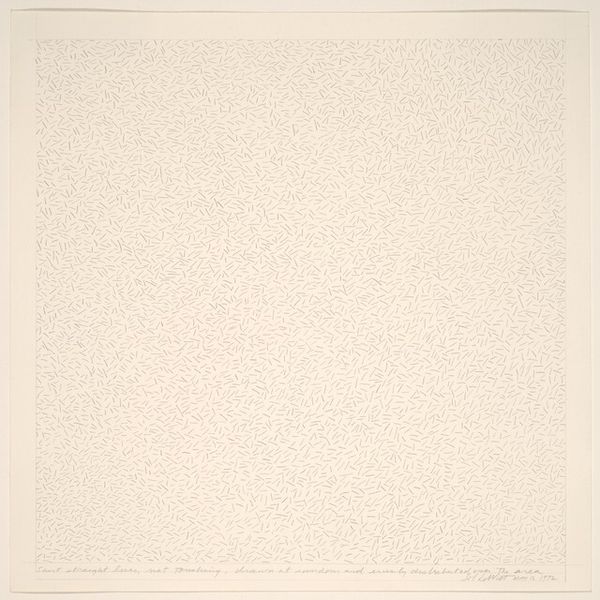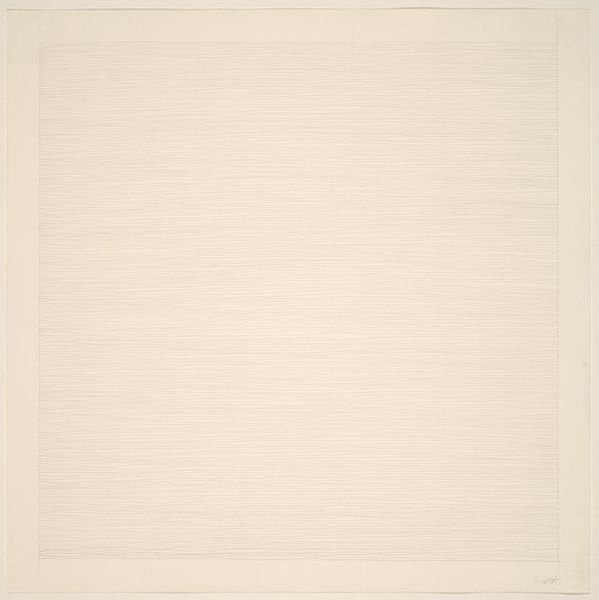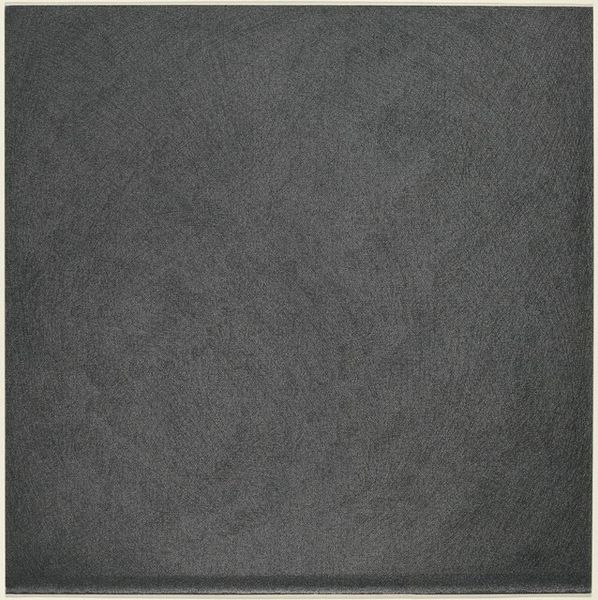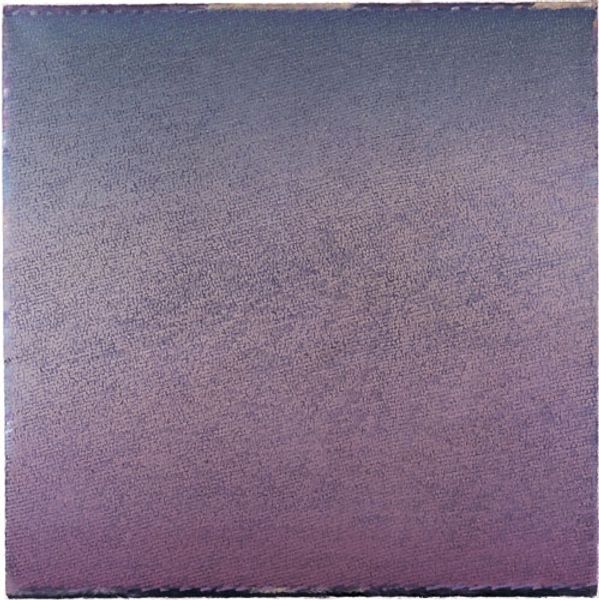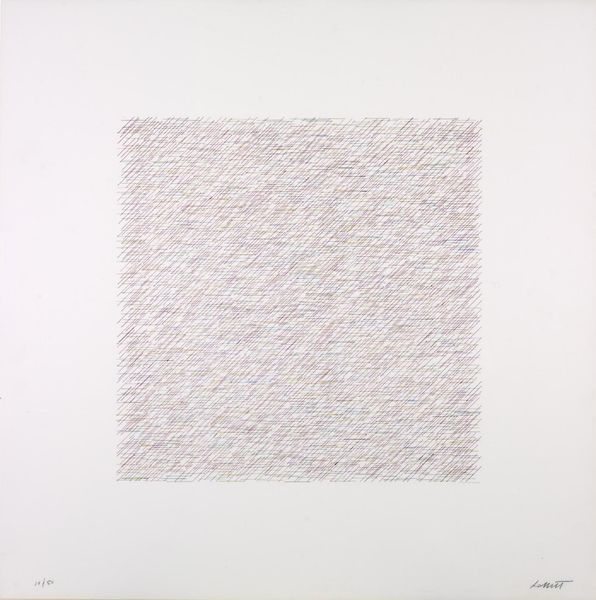
Vertical Lines, Not Touching 1970
0:00
0:00
sollewitt
Museum of Modern Art (MoMA), New York City, NY, US
drawing, print, paper, serial-art, graphite
#
drawing
#
conceptual-art
#
minimalism
# print
#
paper
#
serial-art
#
geometric
#
geometric-abstraction
#
abstraction
#
line
#
graphite
Copyright: Sol LeWitt,Fair Use
Editor: We're looking at Sol LeWitt's "Vertical Lines, Not Touching" from 1970, a graphite drawing on paper. At first glance, it seems like a uniform gray square, almost like static, sitting on a field of white. What do you see in this piece, especially beyond that initial impression? Curator: The conceptual weight of the work resides in its title, acting as a linguistic constraint upon the visual field. While it may appear visually simple, a closer examination reveals the intricacy in the execution. The individual lines, none truly touching, become units of a larger composition. Consider the texture, the subtle variations in gray achieved through the density and proximity of these marks. Editor: So the overall effect, that seemingly uniform gray, is actually built from tiny, individual acts of separation. Is there significance to it being graphite on paper? Curator: The choice of graphite foregrounds the materiality of the artwork, the literal act of drawing, making a claim on the objective nature of art. Further, the drawing itself functions as a set of instructions carried out. We witness, therefore, both the concept and the meticulous physical realization of that concept. Editor: It’s interesting how the restrictions actually create the piece, almost like a set of rules for a game. Curator: Precisely. LeWitt establishes parameters, which in turn generate the artwork's form. It allows the viewer to focus less on subjective expression, and more on the structural integrity of the piece and the objective execution of a pre-determined idea. How does considering these elements affect your initial reaction to the work? Editor: It definitely shifts my perspective. It's no longer just a gray square, but a complex system. I now wonder if LeWitt embraced those restrictions to create something unique within strict rules. Curator: Indeed. It challenges our understanding of authorship and the role of the artist as being the sole determinant of artistic form.
Comments
No comments
Be the first to comment and join the conversation on the ultimate creative platform.
